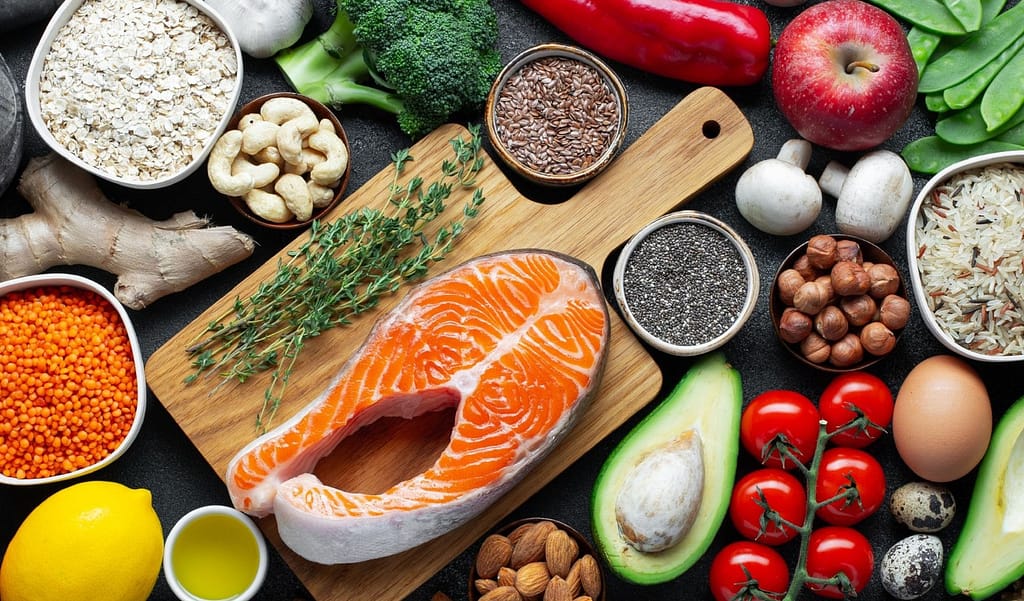Food is more than fuel for the body. Science continually researches how food can affect one’s mood and how healthy food choices can benefit people both physically and psychologically. Promoting “mood-boosting” nutrition through medically tailored, home-delivered meals will help your members thrive.
Omega-3s Reduce Inflammation and Increase Mood
Omega-3 fatty acids play an essential role in a healthy diet. They facilitate the transmission of signals throughout the body, protect the heart, contribute to brain health and development, and reduce inflammation. One topic that has gained interest over the years is the effect of Omega-3s on mood disorders.
Several mood disorders, including depression and anxiety, have been found to have underlying inflammation in the brain. In several studies, patients diagnosed with anxiety and depression were shown to have lower Omega-3 levels in their blood and brain. There are three types of Omega-3s which all promote health: Docosahexaenoic acid (DHA), Eicosapentaenoic acid (EPA), and Alpha-linolenic acid (ALA). Of these, EPAs play a unique role in maintaining a healthy mood by reducing inflammation in the brain. Omega-3s are most commonly found in fatty fish like salmon, tuna, sardines, mackerel, and anchovies; therefore, the American Heart Association recommends consuming fish twice a week.
Increase Antioxidants to Reduce Oxidative Stress
The aging process is natural and inevitable. During the aging process, physical frailty, psychological impairment, and cognitive decline occur, which increase oxidative stress. In simple terms, the body develops damaged molecules that can be repaired with the help of antioxidants.
However, there are foods containing antioxidants that your members can consume to help reduce cell degeneration and promote healthy aging. Popular antioxidants include vitamins A, C, and E, found in leafy greens, carrots, bell peppers, citrus fruits, nuts, and seeds. Polyphenols and carotenoids are also potent antioxidants that are found in the pigments of many fruits and vegetables. The best rule of thumb for antioxidants is, “Eat the Rainbow!” The more color on your members’ plates, the more antioxidants they consume. This reduces oxidative stress and they’ll feel better. Smoothies are an excellent way to incorporate several different colors into one dish. Or show them how to create their own Rainbow Bowl at home!
Eat for Your Gut!
The gut plays a vital role in our bodies—so significant that it has been called the “second brain.” The gut and brain work together and crosstalk to message each other. This is why, when we eat something that makes us sick, we instinctively avoid the food or the place where we ate it.
Several factors including age, genetics, diet, medications, and regional variations influence the gut microbiota. A 2019 article, “Current Understanding of Gut Microbiota in Mood Disorders: An Update of Human Studies” looked at 12 studies that reviewed the gut health of subjects with depressive disorder (seven studies) and bipolar disorder (five studies). Overall, these studies showed that individuals with mood disorders had significant changes in gut microbial composition as well as decreased diversity.
To help increase your participants’ gut bacteria, educate them to consume both prebiotics and probiotics. Prebiotics are important for feeding the microflora of the gut and improving its balance. Prebiotics are typically found in high-fiber foods like fruits, vegetables, and whole grains. Probiotics are live microorganisms that help to maintain or improve good bacteria. These are found in fermented foods like yogurt, kefir, kimchi, kombucha, and sauerkraut. Choosing snacks such as a yogurt parfait or a kefir smoothie is a fantastic way to receive both prebiotics and probiotics in one!
Boost Neurotransmitter Production to Boost Your Mood
Neurotransmitters are brain cells that help to send messages from the brain to every part of your body. These signals control several activities in the body, including some that increase the production of mood-boosting chemicals like dopamine and serotonin. Dopamine plays a role in the brain’s pleasure-reward system, and serotonin is a “ feel-good” chemical.
Lower levels of serotonin have been found to contribute to higher amounts of depression and anxiety. Be sure your members get plenty of the “feel-good” nutrients by consuming foods that help promote neurotransmitter production.
To increase dopamine production, focus on increasing B vitamins found in whole grains, leafy greens, and eggs; and L-tyrosine found in nuts, seeds, and dairy products. Chocolate also contains a compound called phenylethylamine which helps the brain release dopamine. To increase serotonin levels, your members should focus on foods containing tryptophan, an amino acid found in many protein foods like turkey, chicken, fish, milk, cheese, nuts, and seeds. Try a recipe with ingredients that contain both dopamine and serotonin-producing foods.
Boost members’ nutrition and mood with LiveWell with Traditions meals
Mood-boosting foods can be found everywhere! The best thing your members can do is to eat medically tailored meals containing a variety of different foods and colors. LiveWell with Traditions provides home-delivered, nutritious foods right to members’ doors. By eating consistently throughout the day and focusing on colorful plates, your participants will be well on their way to boosting their physical and mental health.



